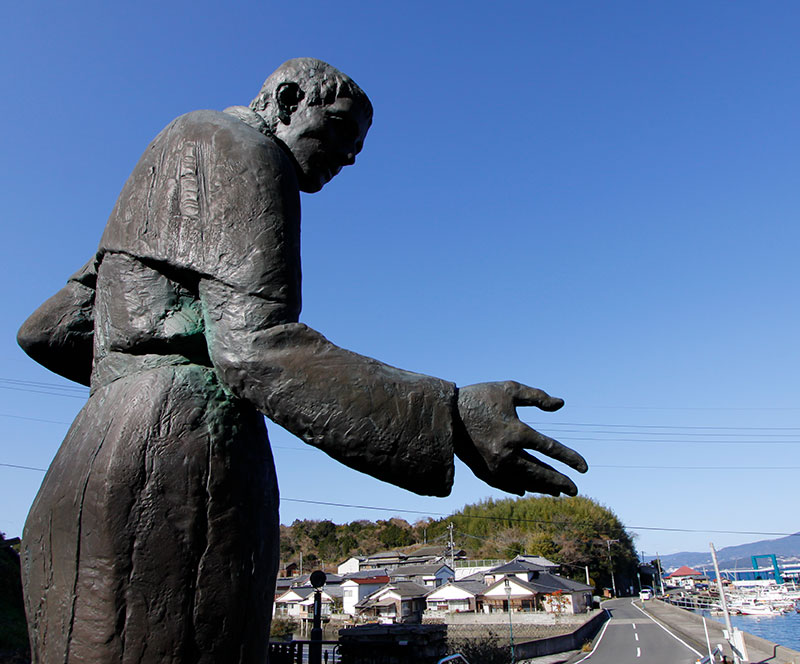
 |  |  |
| | Home | Cultural Exchange | First Mission |
FEATURE:Noh and International Cultural Exchange
2First Missionary Encounter with Noh
It was over a hundred years after Zeami died, in the middle of the 15th century, that a Roman Catholic Christian missionary, Saint Francis Xavier, came to Japan in 1549 (Tenbun 18). After he introduced Christianity to Japan, quite a few of European missionaries visited Japan. They were quite active and moved among people of various social positions during the great changes from the period of “warring states” to the beginning of the Edo period. During their stays, they had plenty of opportunities to come in touch with contemporary Japanese customs and culture, and often watched the favorite performing arts of feudal rulers, such as Noh and Kyōgen. The Portuguese missionary Luís Fróis, who came to Japan in 1563 (Eiroku 6), wrote extensively on what he experienced, including his great work “Historia de Iapan” (History of Japan). He left a lot of important records of the age, and you will come across accounts of Noh in several places.

He stayed in Japan for more than thirty years, and met several historical figures such as Oda Nobunaga and Toyotomi Hideyoshi many times before he died in Nagasaki. In “Historia de Iapan,” he indicates that he watched musical entertainments such as Noh or something of the sort as the side shows of the meetings with these leaders. There is a collection of articles on his impressions on Noh and Kyōgen in a section of his treatise about differences between Japanese and European cultures. Comparing the Japanese theatre with that of Europe, he mentions the following characteristics: “Japanese dramas are written in prose,” “they are stereotyped and monotonous,” “the scenes shift,” and “the players are always singing or dancing.” He also gives some concrete descriptions of acting, such as “the actor walks as if he is searching for a missing thing with a fan in his hand.” It seems that he felt rather strange listening to the music, thus he concludes that the music is monotonous and noisy and makes him shudder. On the other hand, he emphasises the great differences in the cultures and the sense of the Japanese as he mentions that they see European dances as insane and barbarous, and that all of the European musical instruments give them unpleasant feelings.
In the document, he mainly introduces the outside differences, and does not give us detailed descriptions of his thoughts on Noh or Kyōgen, or of the contents of the plays. It was natural for him to have unpleasant impressions of Noh linked to Japanese customs or festivals, because they are deeply influenced by Buddhism and Shintoism, which were considered as demonic paganisms to reject by the missionaries of those days. However, it might be said that Noh as a performing art left a deep impression on the missionaries' minds as we find they left various records during the days of hard struggles within the missions, and even some Christian Noh plays were adapted from episodes in the Bible.